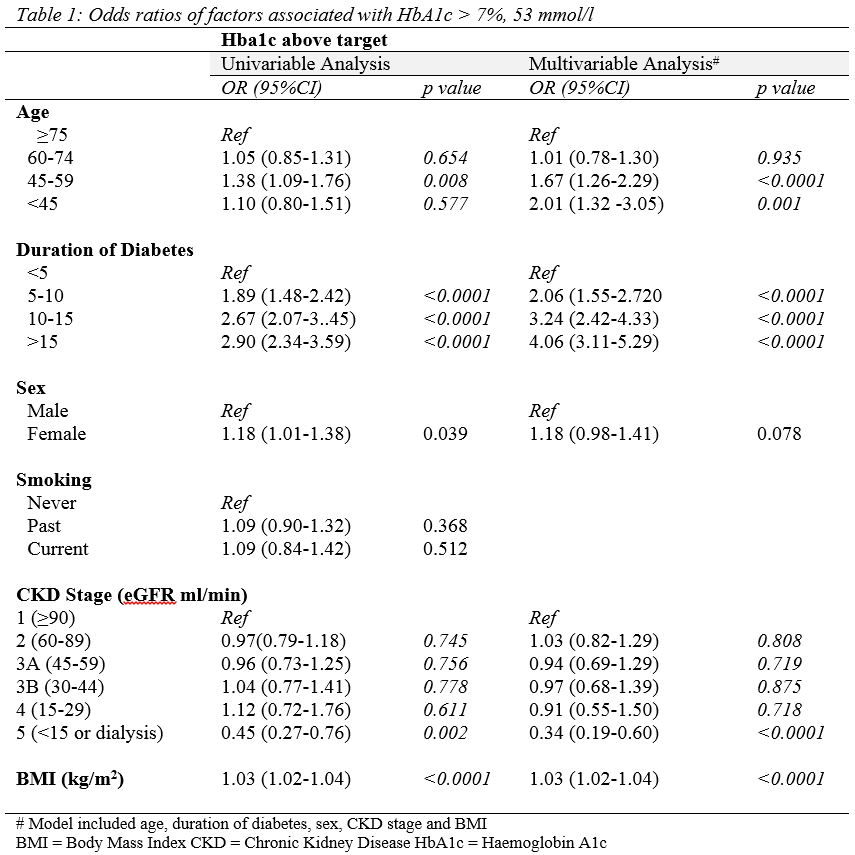Factors associated with glycaemic control among patients with type 2 diabetes attending diabetes centres: Results from ANDA 2015 (#284)
Introduction
Type 2 diabetes, traditionally considered a disease of middle-aged and elderly people, is increasingly diagnosed among younger people. The aim of this study was to examine the intensity of glycaemic control among younger and older patients with type 2 diabetes and the factors associated with poorer glycaemic control.
Methods
A national, cross-sectional study of data from the 2015 ANDA-AQCA database. Subjects included patients with type 2 diabetes, over 18 years old, presenting to a participating Diabetes Centre, during a 1-month survey period in May or June 2015. Pre-specified demographic and clinical variables were obtained. Logistic regression was used to examine factors associated with poorer glycaemic control (HbA1c>7%, 53 mmol/mol).
Results
Data from 4271 patients were analysed. Mean (±SD) age was 62.9±12.5y, mean diabetes duration 13.5±9.4y and mean HbA1c 8.2±1.8%. Glycaemic management was reported as diet only by 4%, oral therapy by 77%, non-insulin injectable therapy by 5% and insulin therapy by 61% of patients.
Older rather than younger patients (aged 45-59y) and patients with longer rather than shorter diabetes duration were more likely to have HbA1c levels above 7%, (Table 1). These effects of age and diabetes duration on HbA1c remained significant after adjustment for sex, smoking, presence of chronic kidney disease and BMI.
Conclusion
Younger age and longer diabetes duration are both associated with poorer glycaemic control among patients with type 2 diabetes. Given the longer diabetes duration expected by younger patients strategies to improve and maintain intensive glycaemic control, are urgently required.

